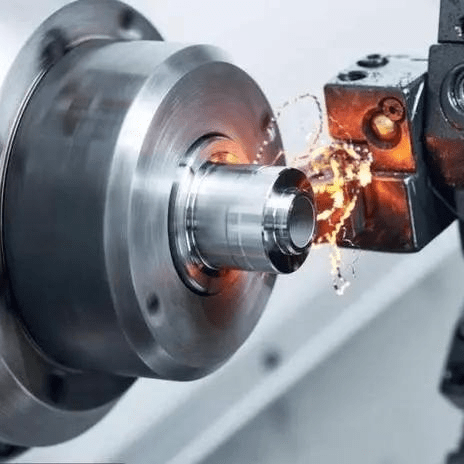What are the Challenges of CNC Turning Titanium?

While CNC turning offers numerous advantages for creating parts from titanium, there are also significant challenges to overcome. Here's a detailed breakdown of the three main hurdles you mentioned:
1. High Strength and Galling
l Increased Tool Wear: Titanium's strength creates higher cutting forces during machining compared to softer metals. These forces can cause rapid wear on standard cutting tools, leading to shorter tool life and the need for frequent tool changes. This can significantly impact production efficiency and raise overall machining costs.
l Galling: Titanium has a high affinity for bonding with other metals, a phenomenon known as galling. This can occur between the cutting tool and the titanium workpiece, causing the titanium to stick to the tool. Galling can lead to poor surface finishes on the machined part, reduced tool life due to increased friction, and potential tool failure if severe.
Overcoming these challenges:
l Specialized Cutting Tools: Standard High-Speed Steel (HSS) tools are not suitable for titanium. Instead, carbide cutting tools are necessary. These offer superior wear resistance and can handle the higher cutting forces.
l Tool Coatings: Applying coatings like Titanium Aluminum Nitride (TiAIN) significantly reduces friction and galling between the tool and the workpiece. This extends tool life, improves surface finish, and reduces the risk of tool failure.
l Sharp Cutting Edges: Maintaining sharp cutting edges on the tools is crucial. Dull tools generate more heat and friction, exacerbating wear and galling issues. Regular tool inspection and timely replacement of dull tools are essential.
2. Heat Generation
l Heat Source: The high cutting forces required for machining titanium combined with the metal's poor thermal conductivity lead to significant heat generation at the cutting zone. This heat can cause several problems:
l Thermal Distortion: Excessive heat can cause the titanium workpiece to warp or deform, compromising the dimensional accuracy of the final part.
l Tool Wear: Heat accelerates wear on the cutting tool, reducing its lifespan.
l Reduced Surface Finish: High temperatures can lead to a poor surface finish on the machined part.
Strategies to Mitigate Heat Generation:
l Reduced Cutting Parameters: Lowering cutting speeds, feed rates, and depth of cut can significantly reduce heat generation. While this slows down machining, it is crucial for successful titanium machining.
l Effective Coolant Strategy: A high-pressure coolant system with a specially formulated coolant for titanium is essential. The coolant should be directed at the cutting zone to absorb heat, lubricate the tool and workpiece, and carry away chips effectively.
l Machining Techniques: Techniques like chip breaking can be employed to reduce the size and amount of chips generated. Smaller chips are easier to evacuate and generate less heat.
3. Cost of Material
l High Material Cost: Titanium is a relatively expensive metal compared to commonly used materials like aluminum or steel. This significantly impacts the overall cost of the machined parts. The cost of the raw material can be a major factor, especially for high-volume production.
By carefully considering these challenges and implementing the right strategies, manufacturers can achieve high-quality CNC turned titanium parts while minimizing production costs and maximizing tool life.
- Art
- Causes
- Crafts
- Dance
- Drinks
- Film
- Fitness
- Food
- Juegos
- Gardening
- Health
- Inicio
- Literature
- Music
- Networking
- Otro
- Party
- Religion
- Shopping
- Sports
- Theater
- Wellness


